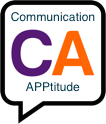One of the findings was that when teachers use Semantic
Strategies, it has a strong positive affect on students’ understanding of
vocabulary. These semantic strategies included
discussions, student-friendly definitions, word characteristics, examples and non-examples,
visuals, and graphic organizers. Several studies (Apthorp, 2006; Fore III, Boon,
& Lowrie, 2007; Nash & Snowling, 2006) reported positive gains when
semantic strategies were part of a multicomponent vocabulary program.
Additionally, studies showed semantic instruction to be effective with students
with limited vocabulary knowledge (Apthorp, 2006) and resulted in more
“durable” knowledge (Nash & Snowling, 2006, p. 349).
 We
know that children benefit, not only when we talk about words or define them,
but when we provide them with visuals, and show them how to link new words with
known words. When they are provided multiple contexts, and learn about the
precision of meanings through examples and non-examples, they are more
successful at “owning” the new words. For example, after a student learns the
concept of “audacious”, we might ask, “Is
this an example or non-example of audacious, ‘The
audacious boys rode their skateboards downstairs and handrails.’” “How about this one? ‘The audacious parents
served their children breakfast.’?” As students fine-tune their understanding of words, these examples/non-examples can become more subtle.
We
know that children benefit, not only when we talk about words or define them,
but when we provide them with visuals, and show them how to link new words with
known words. When they are provided multiple contexts, and learn about the
precision of meanings through examples and non-examples, they are more
successful at “owning” the new words. For example, after a student learns the
concept of “audacious”, we might ask, “Is
this an example or non-example of audacious, ‘The
audacious boys rode their skateboards downstairs and handrails.’” “How about this one? ‘The audacious parents
served their children breakfast.’?” As students fine-tune their understanding of words, these examples/non-examples can become more subtle.
Reference: Angela Hairrell , William Rupley & Deborah Simmons
(2011) The
State of Vocabulary Research, Literacy Research and Instruction,
50:4, 253-271, DOI:
10.1080/19388071.2010.514036





